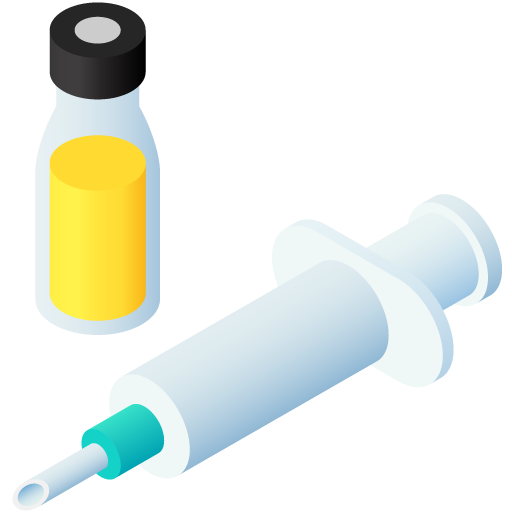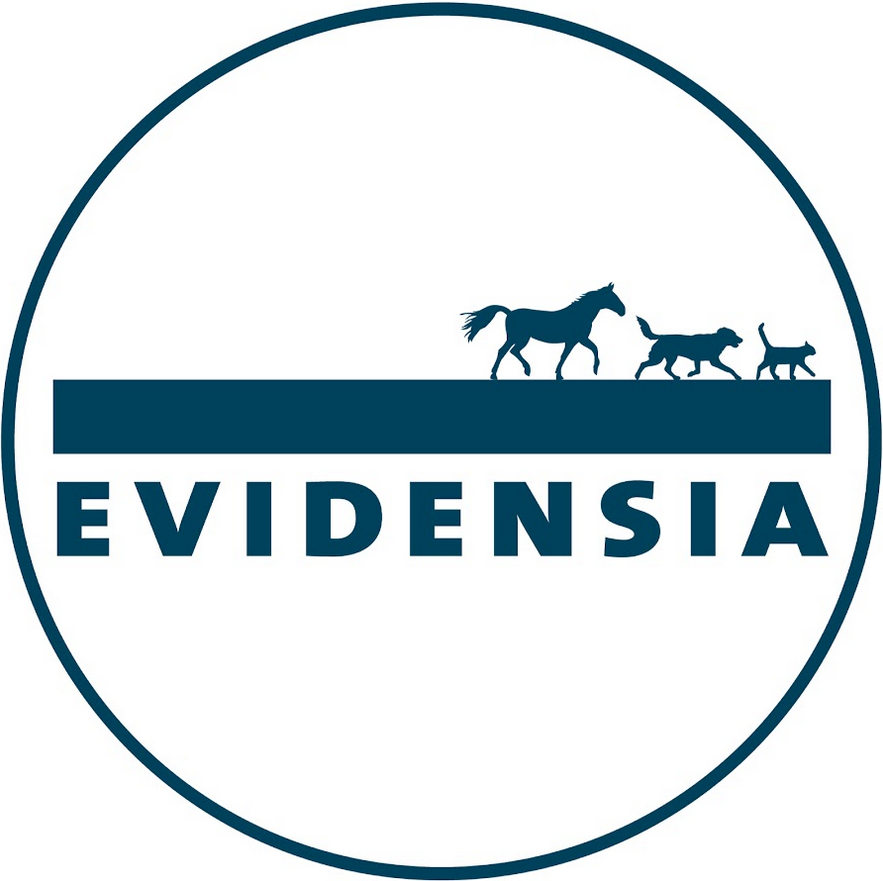Combination therapy
No results were found for your selected species
Equilis Te
Active substance
ATC code
Species
Horses
Indications
Active immunisation of horses from 6 months of age against tetanus to prevent mortality.
Onset of immunity: 2 weeks after the primary vaccination course.
Duration of immunity:17 months after the primary vaccination course. 2 years after the first revaccination.
Dose to be administered and administration route
Intramuscular use.
Allow the vaccine to reach room temperature before use.
Vaccination schedule:
Primary vaccination course
Administer one dose (1 ml), by intramuscular injection, according to the following schedule:
Primary vaccination course: first injection from 6 months of age, second injection 4 weeks later.
Revaccination
The first revaccination is given not later than 17 months after the primary vaccination course.
Thereafter a maximum interval of two years is recommended (see scheme).
In case of increased infection risk or insufficient colostrum intake, an additional initial injection can be given at the age of 4 months followed by the full vaccination programme (primary vaccination course at 6 months of age and 4 weeks later)
Concurrent active and passive immunisation (emergency vaccination)
The vaccine can be used together with Tetanus Serum for treatment of injured horses that have not been immunised against tetanus. In that case, the first dose (V1) of vaccine can be given concurrently with the appropriate prophylactic dose of Tetanus Serum at a separate injection site, using separate syringes and needles. This will lead to a passive protection against tetanus for at least 21 days after concurrent administration. The second dose of the vaccine (V2) should be administered 4 weeks later. A third vaccination with Equilis Te should be repeated at least four weeks later.
Concurrent use of Equilis Te and Tetanus Serum from MSD Animal Health may reduce active immunity against tetanus compared to horses vaccinated with Equilis Te in the absence of tetanus antitoxin serum.
Adverse reactions
Horses:
|
Rare (1 to 10 animals / 10,000 animals treated): |
|
|
Very rare (<1 animal / 10,000 animals treated, including isolated reports): |
Fever[3], Lethargy3, Inappetence3, Hypersensitivity reaction[4]. |
1 A diffuse hard or soft swelling (max. diameter 5 cm), regressing within 2 days. A local reaction exceeding 5 cm and possibly persisting longer than 2 days may occur in very rare cases.
2 Pain at the injection site may result in temporary functional discomfort (stiffness).
3 Fever, sometimes accompanied by lethargy and inappetence, may occur for 1 day, and up to 3 days in exceptional circumstances.
4 Including anaphylaxis (sometimes fatal). If such a reaction occurs, appropriate treatment should be administered without delay. Reporting adverse events is important. It allows continuous safety monitoring of a veterinary medicinal product.
Reports should be sent, preferably via a veterinarian, to either the marketing authorisation holder or the national competent authority via the national reporting system. See also section 16 of the package leaflet for contact details.
Dispensing
POM-V - Prescription Only Medicine – VeterinarianSUMMARY OF PRODUCT CHARACTERISTICS
1. NAME OF THE VETERINARY MEDICINAL PRODUCT
Equilis Te suspension for injection for horses
2. QUALITATIVE AND QUANTITATIVE COMPOSITION
Each dose of 1 ml contains:
Active substance:
Tetanus toxoid 40 Lf 1
1 Flocculation equivalents; corresponds with ≥ 30 IU/ml guinea pig serum in the Ph. Eur. potency test
Adjuvants:
Purified Saponin 375 µg
Cholesterol 125 µg
Phosphatidylcholine 62.5 µg
For the full list of excipients, see section 6.1
3. PHARMACEUTICAL FORM
Suspension for injection.
Clear opalescent suspension.
4. CLINICAL PARTICULARS
4.1 Target species
Horses
4.2 Indications for use, specifying the target species
Active immunisation of horses from 6 months of age against tetanus to prevent mortality.
Onset of immunity: 2 weeks after the primary vaccination course
Duration of immunity:17 months after the primary vaccination course 24 months after the first revaccination
4.3 Contraindications
None.
4.4 Special warnings for each target species
Foals should not be vaccinated before the age of 6 months, especially when born to mares that were revaccinated in the last two months of gestation, because of possible interference by maternally derived antibodies.
4.5 Special precautions for use
Special precautions for use in animals Only healthy animals should be vaccinated.
Special precautions to be taken by the person administering the veterinary medicinal product to animals
In case of accidental self-injection, seek medical advice immediately and show the package leaflet or the label to the physician.
4.6 Adverse reactions (frequency and seriousness)
A diffuse hard or soft swelling (max. diameter 5 cm) may rarely occur at the injection site, regressing within 2 days. In very rare cases a local reaction exceeding 5 cm and possibly persisting longer than 2 days may occur. Pain at the injection site can occur in rare cases which may result in temporary functional discomfort (stiffness). In very rare cases, fever, sometimes accompanied by lethargy and inappetence, may occur for 1 day, and up to 3 days in exceptional circumstances.
The frequency of adverse reactions is defined using the following convention: - very common (more than 1 in 10 animals displaying adverse reaction(s) during the course of one treatment)
- common (more than 1 but less than 10 animals in 100 animals)
- uncommon (more than 1 but less than 10 animals in 1,000 animals)
- rare (more than 1 but less than 10 animals in 10,000 animals)
- very rare (less than 1 animal in 10,000 animals, including isolated reports).
4.7 Use during pregnancy, lactation or lay
Can be used during pregnancy and lactation.
4.8 Interaction with other medicinal products and other forms of interaction
Safety and efficacy data are available which demonstrate that this vaccine can be administered on the same day but not mixed with Tetanus Serum from Intervet.
No information is available on the safety and efficacy of this vaccine when used with any other veterinary medicinal product except the product mentioned above. A decision to use this vaccine before or after any other veterinary medicinal product therefore needs to be made on a case by case basis.
4.9 Amounts to be administered and administration route
Intramuscular use
Allow the vaccine to reach room temperature before use.
Vaccination schedule:
Primary vaccination course
Administer one dose (1 ml), by intramuscular injection, according to the following schedule:
• Primary vaccination course: first injection from 6 months of age, second injection 4 weeks later.
Revaccination
The first revaccination is given not later than 17 months after the primary vaccination course.
Thereafter a maximum interval of two years is recommended (see scheme).
V1 V2 5 12 V3 24 V4
![]()
0 1 6 18 42 months
Equilis Te Equilis Te Equilis Te Equilis Te
In case of increased infection risk or insufficient colostrum intake, an additional initial injection can be given at the age of 4 months followed by the full vaccination programme (primary vaccination course at 6 months of age and 4 weeks later)
Concurrent active and passive immunisation (emergency vaccination)
The vaccine can be used together with Tetanus-Serum for treatment of injured horses that have not been immunised against tetanus. In that case, the first dose (V1) of vaccine can be given concurrently with the appropriate prophylactic dose of TetanusSerum at a separate injection site, using separate syringes and needles. This will lead to a passive protection against tetanus for at least 21 days after concurrent administration. The second dose of the vaccine (V2) should be administered 4 weeks later. A third vaccination with Equilis Te should be repeated at least four weeks later. Concurrent use of Equilis Te and Tetanus-Serum from Intervet may reduce active immunity against tetanus compared to horses vaccinated with Equilis Te in the absence of tetanus antitoxin serum.
4.10 Overdose (symptoms, emergency procedures, antidotes), if necessary
Following the administration of a double dose of vaccine, no side effects other than those described under section 4.6 have been observed except for some depression at the day of vaccination.
4.11 Withdrawal period Zero days.
5. IMMUNOLOGICAL PROPERTIES
To stimulate active immunity against tetanus.
Pharmacotherapeutic group: Inactivated bacterial vaccine. ATC vet code: QI05AB03
6. PHARMACEUTICAL PARTICULARS
6.1 List of excipients
Lactose
Phosphate buffer
Chloride buffer
Traces of formaldehyde
Purified Saponin
Cholesterol
Phosphatidylcholine
6.2 Incompatibilities
Do not mix with any other veterinary medicinal product.
6.3 Shelf life
Shelf life of the veterinary medicinal product as packaged for sale: 2 years.
6.4 Special precautions for storage
Store in a refrigerator (2 °C – 8 °C).
Protect from light. Do not freeze.
6.5 Nature and composition of immediate packaging
1 ml suspension in type I glass vial closed with a halogenobutyl rubber stopper and sealed with an aluminium cap.
1 ml suspension in type I glass pre-filled syringe, containing a plunger with a halogenobutyl end and closed with a halogenobutyl stopper.
Package size:
Cardboard box with 10 glass vials.
Cardboard box with 10 pre-filled syringes with needles.
Not all pack sizes may be marketed.
6.6 Special precautions for the disposal of unused veterinary medicinal products or waste materials derived from the use of such products
Any unused veterinary medicinal product or waste materials derived from such veterinary medicinal product should be disposed of in accordance with local requirements.
7. MARKETING AUTHORISATION HOLDER
UK(GB):
MSD Animal Health UK Limited
Walton Manor
Walton
Milton Keynes
Buckinghamshire
MK7 7AJ
8. MARKETING AUTHORISATION NUMBER(S)
UK(GB):
Vm 01708/5034
9. DATE OF FIRST AUTHORISATION/RENEWAL OF THE AUTHORISATION
Date of first authorisation: 08/07/2005 Date of last renewal: 10/06/2015
10. DATE OF REVISION OF THE TEXT
05/2019
PROHIBITION OF SALE, SUPPLY AND/OR USE
Not applicable.
 TRUSTED SOURCE
TRUSTED SOURCE









